What Colors Do You Mix to Make Emerald Green
Green is a colour that can easily overpower a painting and many painters find mixing greens a challenge. But landscape painters, in particular, need to use a lot of green. Many artists find that the solution is to ensure you use a wide variety of greens. The examples of mixing greens here are done with oil colour but the method applies equally to other mediums. This two-step method for colour mixing works to mix any colour, not just green.
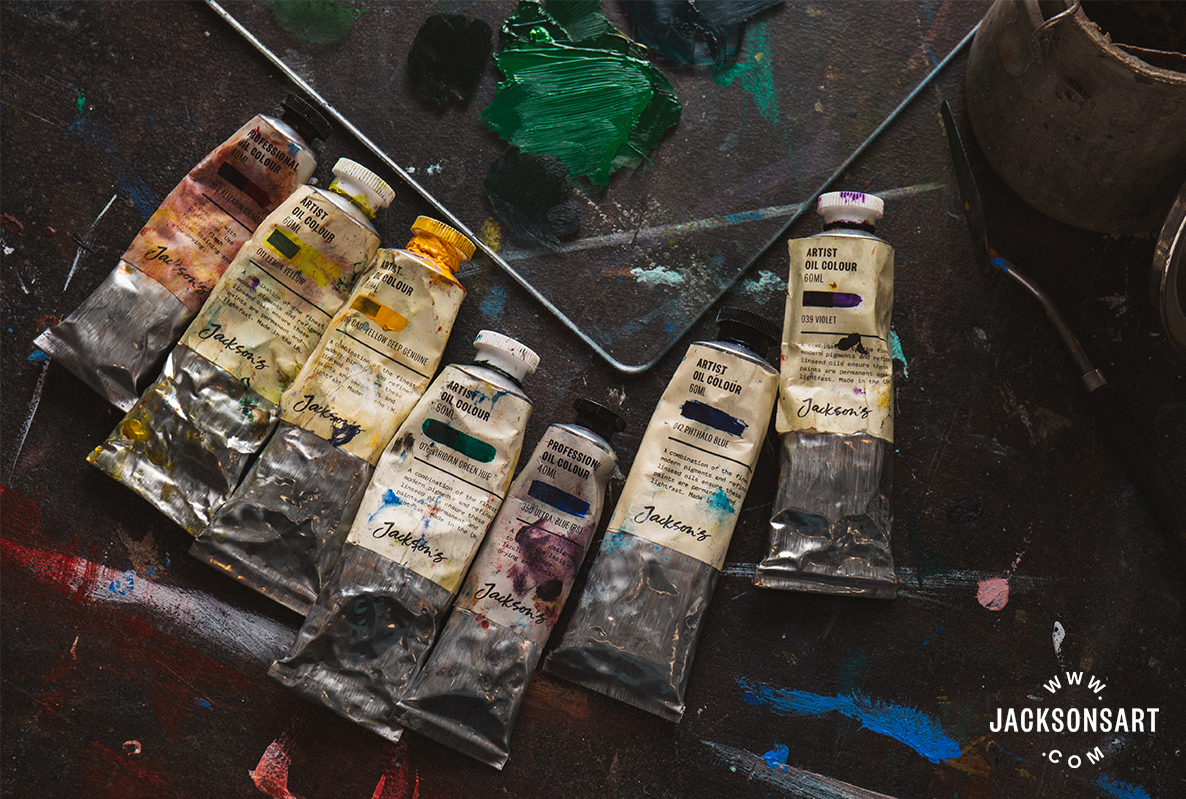
Start with a Base Middle Green
One common way to mix greens is to start with a base middle green and modify it with two other colours to achieve a spectrum of greens. The base middle green can be a tube of a single pigment green, a tube of a premixed-for-convenience green or your favourite mixture of two paints to make an average middle green.
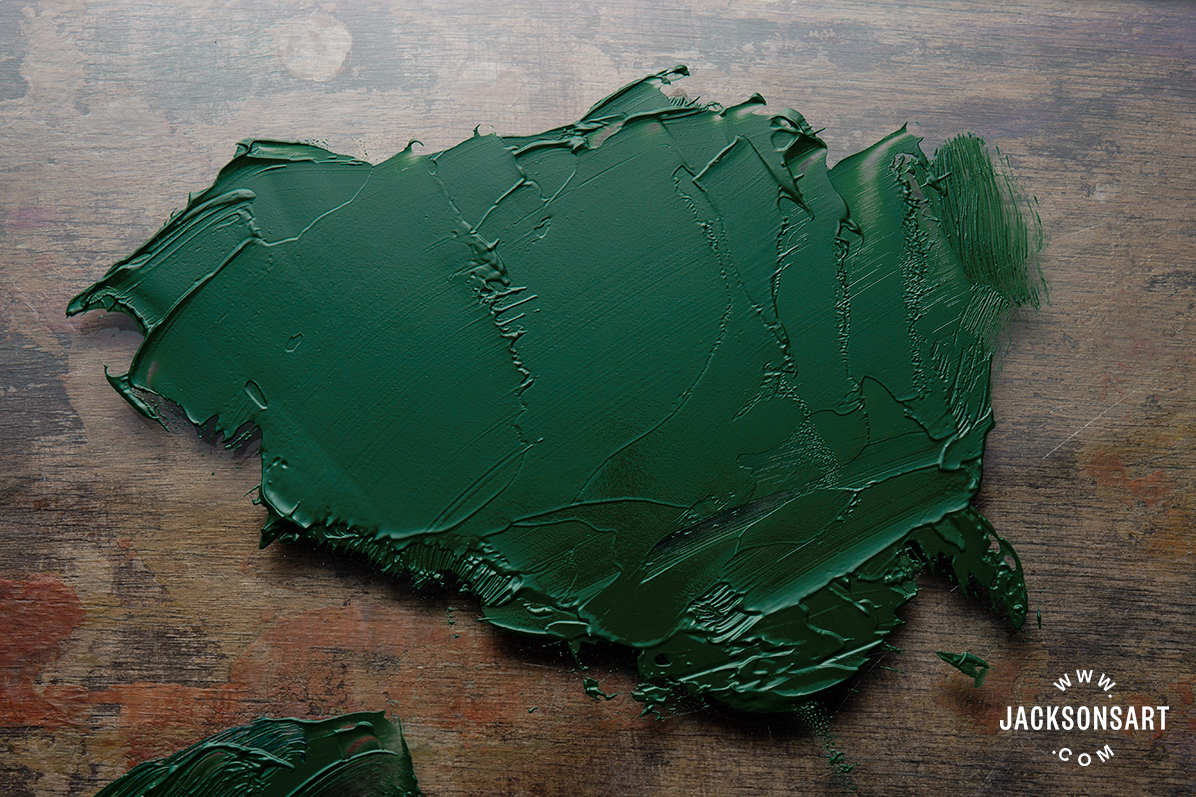
Middle Green made with 3 parts Jackson's Artist Oil Lemon Yellow and 1 part Jackson's Artist Oil Phthalo Blue.
More Base Middle Greens:
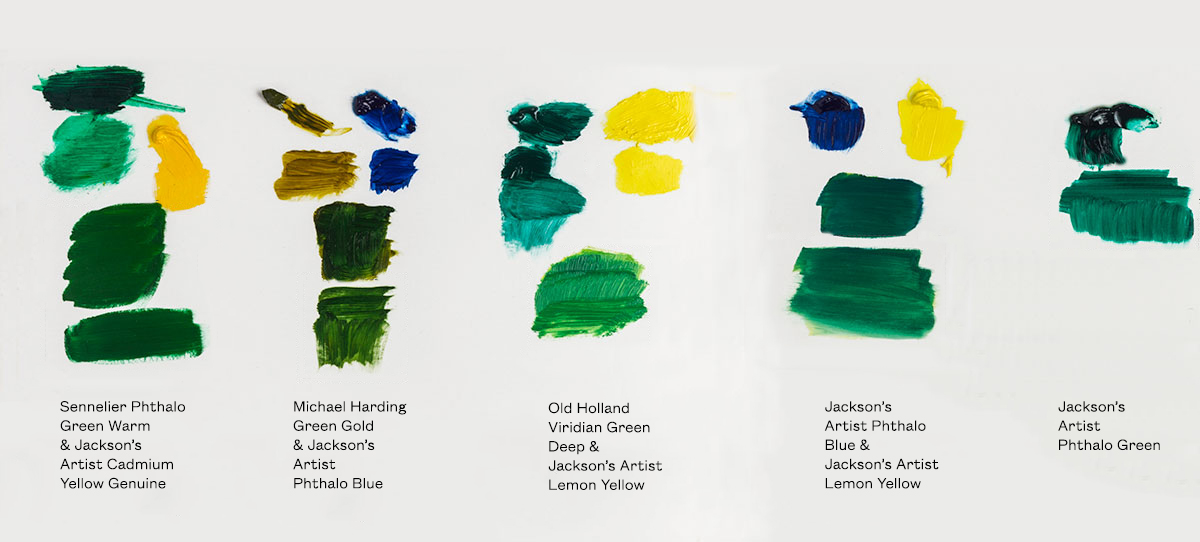
(Click the image for a larger, clearer version.)
Modify the Base Middle Green
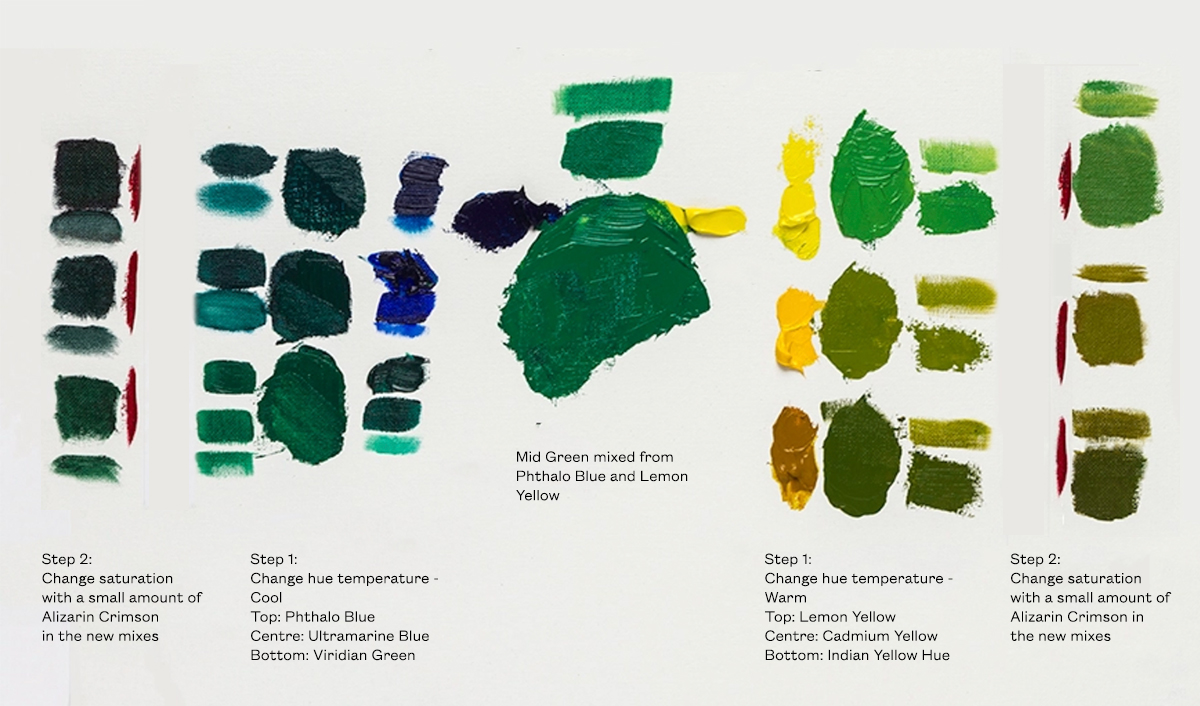
(Click the image for a larger, clearer version.)
Mixing a variety of greens from this base middle green then consists of adjustments to the three characteristics of this base colour:
- light/dark (add yellow to lighten or blue/violet to darken),
- warm/cool (add yellow/orange/red/brown to warm or blue or a bluer green like viridian to cool),
- saturated/subdued (add brighter green to brighten or contrasting red to dull).
Beginning with the base middle green paint, modify the hue and temperature with a yellow (to make a lighter, warmer, more yellow green) or blue (to make a darker, cooler, more bluish-green) paint.
Second, modify the saturation with any warming or neutralising colour from orange to violet (it usually takes a very small amount to start dulling or desaturating the colour). In the samples I used a smidge of crimson. To increase the saturation you can add a brighter green, like Permanent Green.
With this method you can mix a spectrum of green shades to provide the necessary variety: warm greens, cool greens, light greens, dark greens, bright greens, and dull grey greens.

A wide variety of warm, cool, light, dark, saturated and dull greens, all modified from a middle green.
All the paints used in the following colour mixing wheels are Jackson's Artist Oils, except Ultramarine Blue and Alizarin Crimson which are Jackson's Professional Oils.
Modifying a Middle Green – Phthalo Green
Centre: Middle Green – Phthalo Green, thick and also thinned with a solvent
1st ring: four warm colours and four cool colours
2nd ring: a mix of the middle green and the modifying colour
Outer ring: the mixture dulled with a small amount of Alizarin Crimson
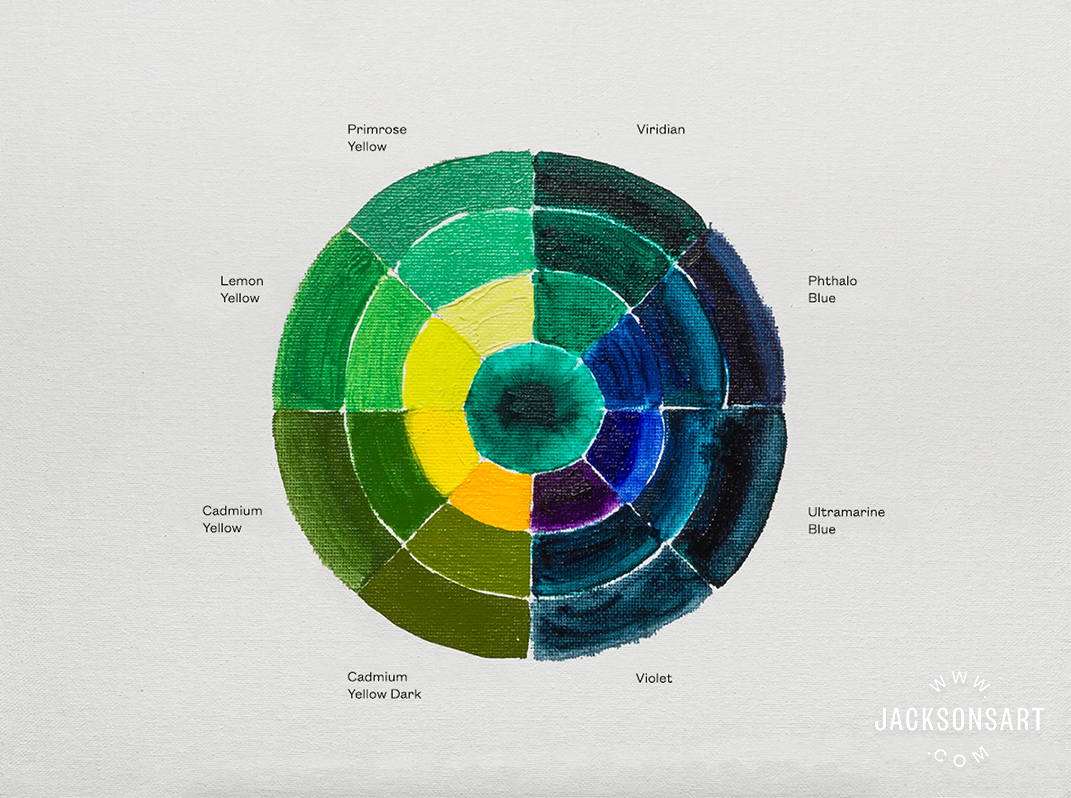
Modifying a Middle Green – Lemon Yellow and Phthalo Blue
Centre: Middle Green mixed from three parts Lemon Yellow and one part Phthalo Blue
1st ring: four warm colours and four cool colours
2nd ring: a mix of the middle green and the modifying colour
Outer ring: the mixture dulled with a small amount of Alizarin Crimson

You can find products related to oil painting, such as brushes, mediums, surfaces, and paints, in our oil painting department.

Julie was the editor of the Jackson's Art Blog for 10 years and now writes for the blog part time. With an encyclopaedic knowledge of art materials (majoring in oils and acrylics), she loves researching and writing pieces for the blog as she learns something new each time. Julie is also a professional artist who studied on the Turps Studio Painting Programme and Camberwell College of Art.
What Colors Do You Mix to Make Emerald Green
Source: https://www.jacksonsart.com/blog/2017/06/13/mixing-greens-in-oil-colour/